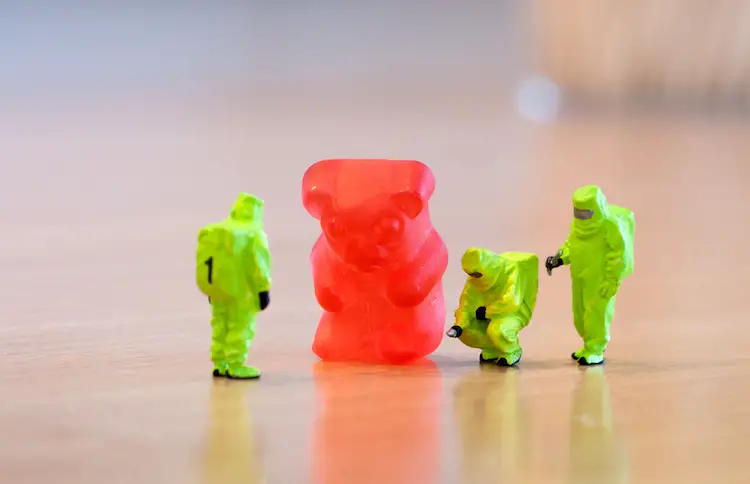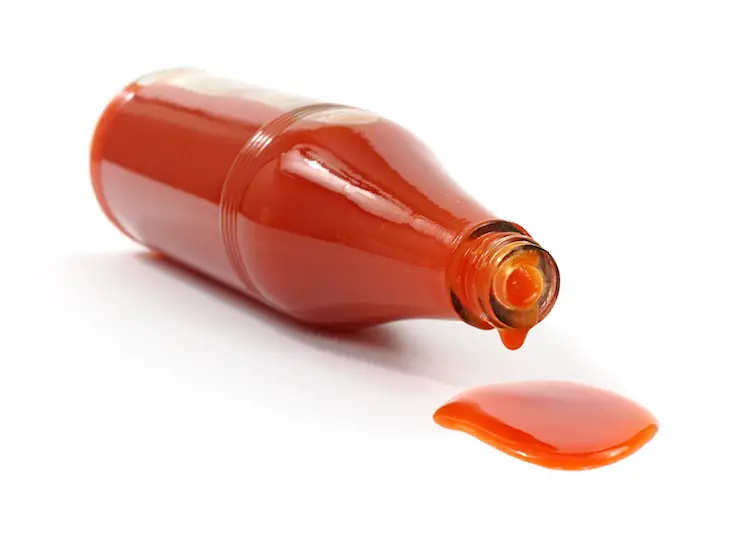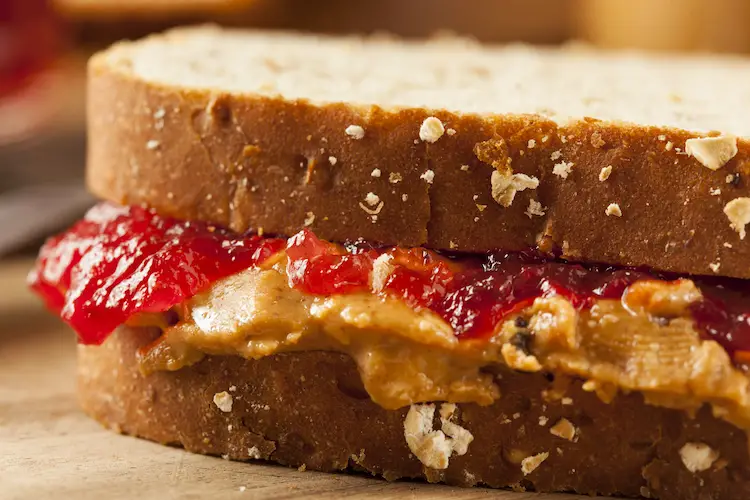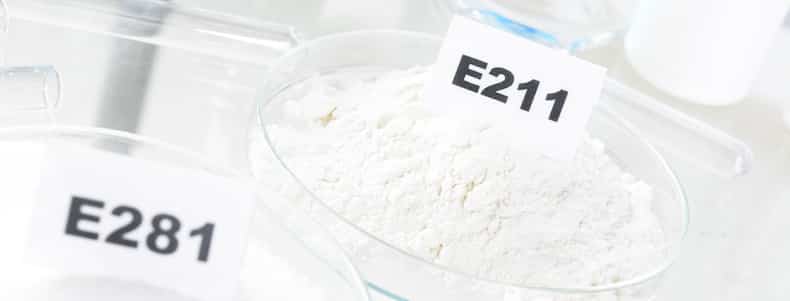We live in an age where we are constantly being warned about the foods we are consuming. Diets are regularly changing; sugar is good for you one moment and bad for you the next! Fat was unhealthy yesterday and healthy today.
We hear about genetically modified plants and the dangers that they pose to our health. Pesticides and chemicals that cause tumours, serious health risks and other alarming side effects are plaguing us evermore. We are hearing more and more stories of young, healthy people discovering cancer, and it unsettles us all.
It makes us question what we are actually eating, when half of the ingredients listed on the back of our food packaging, we don’t even consider because it’s written in scientific codes. We won’t bother to research these codes later.
Sodium Benzoate seems to be the new chemical on everyone’s mind these days. Or perhaps, like me, this is the first time you’re hearing about it.
Knowing the different names sodium benzoate hides behind, I took a walk through my house to check the ingredients of various products. It appeared in my shampoo, my face wash, my mouthwash, my hair mousse, my sweet chilli sauce, salsa dip, Doritos and my coke zero!

Realizing that there is quite a growing concern around this chemical, I suddenly felt quite uncomfortable about its presence in my household items – items that I typically use every single day. It felt like I had just discovered an unwelcome guest living amidst me!
What is Sodium Benzoate?
Sodium Benzoate is a food preservative that inhibits microbial growth. It is salt derived from benzoic acid. It is used as a preservative in foods, cosmetics and medicines to increase their shelf life.
It has an E number of E211 and can also be identified as benzoate of soda, benzoate, benzoate acid and benzene. As a preservative, it is a bacteriostatic and fungistatic chemical. This means that it simply inhibits the growth of fungus, and or bacteria. Sodium benzoate occurs naturally in some fruits but the problem comes in when the chemical is synthesised in labs and added to various foods and other products.
Where Can It Be Found?
Sodium benzoate can be found in foods such as salad dressings, fruit juices, carbonated drinks, jams, pickled foods and condiments. It can also be found in cosmetics and medicines such as mouthwashes, body lotions, shampoos, deodorant, cough syrups and pills.

Surprisingly, there are many companies that we are quite familiar with that use this preservative. Garnier, Head & Shoulders, Pantene, Aussie, The Body Shop and Burt’s Bees are a few of these companies. Most surprisingly however, is to discover The Body Shop and Burt’s Bees in this list, since these two companies are so well known for the natural products that they offer.
How Does It Work?
Sodium benzoate works by altering the pH level of food. It enters the individual cells and increases its overall acidity, thereby creating an environment hostile to the growth of fungus or bacteria.
But why do products like soft drinks need this preservative? Sodium benzoate also intensifies the flavouring of these well-loved drinks.
Should I Be Worried About It?
There are conflicting opinions about sodium benzoate throughout the world. Although it occurs naturally in some fruits and spices, such as cranberries, apples, plums, prunes, cloves, and cinnamon, it is generally not ideal for lab synthesised chemicals to be artificially inserted into other products. Some doctors maintain that due to the small amount of sodium benzoate we are consuming, it does not pose a definite risk to our health.
The Food and Drug Association (FDA) have recognised sodium benzoate as generally safe to consume in low doses.
Sodium benzoate is not fat soluble, which means that it does not concentrate in the body. According to the World Health Organization’s Concise International Chemical Assessment Document (CICAD) sodium benzoate is not anything to worry about because it is expelled from our body via our urine.
“After oral uptake, benzoic acid and sodium benzoate are rapidly absorbed from the gastrointestinal tract and metabolized in the liver by conjugation with glycine, resulting in the formation of hippuric acid, which is rapidly excreted via the urine.”

That being said, studies have shown that the combination of sodium benzoate with ascorbic acid (vitamin C) converts the chemical into benzene which is associated with various blood cancers. That is something to worry about!
Is It Banned in Europe?
A study was conducted in 2007 in the UK by the Food Standards Agency (FSA). It became known as “the Southampton Study”. The study involved food colourants, used to make food bright and appealing to children, and the preservative sodium benzoate. The test was conducted on a group of children and found signs of hyperactivity. In 2008, the FSA decided to call a “voluntary ban” on the colorants and the preservative. A voluntary ban means that they would ask the companies involved to refrain from using these additives, but would not force them by law to comply.
The European parliament suggested that all food products in the European Union that contain any of the offending additives should carry a warning label on the packaging of the harmful side effects that may occur if consumed. They did this in the hope that it would deter parents from purchasing these products as most people are more likely to avoid products with warnings. They also hoped that the companies involved would eventually be moved to not use the additives any longer.
You can read the case study here.
What Tests Have Been Done?
Numerous studies have been conducted evaluating sodium benzoate’s effects on various aspects of the human anatomy. These tests range from hyperactivity in both children and adults to discovering that the preservative holds cell mutating properties.
Sodium benzoate and anxiety & impaired motor skills
A study was conducted by Dr Ali Noorafshen and published in Europe PubMed Central that found that rats subjected to constant doses of sodium benzoate developed anxiety and poor motor function.
In the study, 10 rats were given 200mg/kg of sodium benzoate daily for four weeks. An elevated pulse maze was used to test the anxiety levels of the rats. One arm of the maze was open, so there were no railings or walls to keep the rats safe from falling. The other arm of the maze was closed with walls. Rats with less anxiety were expected to spend more time on the open arm of the maze.
Furthermore, a rotarod test measured the rats’ ability to balance and think quickly. The rat’s that could stay on the rotarod for long periods of time indicated that they had better motor skills.
The findings proved that the rats subjected to daily doses of sodium benzoate spent less time on the open arm of the maze and were also unable to balance as long as the control rats on the rotarod test. You can read about the study here: https://www.anxiety.org/junk-food-anxiety-sodium-benzoate
Sodium benzoate as genotoxic
A study was done to evaluate the genotoxic (cell destructive) effects of sodium benzoate. The results found that sodium benzoate was clastogenic (disrupting or breaking of chromosomes, leading to sections of the chromosome being deleted, added, or rearranged), mutagenic (mutates cells) and cytotoxic (cell destructive) to human lymphocytes (a type of white blood cell). You can read about the study here.
Another study was conducted in 2007 by Dr Peter Piper at Sheffield University. He mixed sodium benzoate with cells. The sodium benzoate was found to damage the DNA of the mitochondria, which is the powerhouse of the cell. This in turn affects everyday bodily function.
Sodium benzoate and degenerative diseases
Sodium benzoate has also been linked to many diseases that affect the neurons in your brain. Diseases include Parkinson’s, Huntington’s, Alzheimer’s and spinal muscular atrophy. These diseases all affect bodily functions such as balance, breathing, movement and heart function.
Sodium benzoate and hyperactivity
Not all studies support this claim, but as mentioned before, it has been found that certain artificial colorants, when paired with sodium benzoate, cause hyperactivity. This does not only apply to young children but to adults as well, who are consuming large amounts of the chemical through products such as soft drinks.
Sodium benzoate and cancer

Sodium benzoate is thought by many to be bad on its own when consumed constantly over extended periods of time, but even worse is when it is combined with citric acid or ascorbic acids (vitamin C). The combination of sodium benzoate with vitamin C changes it to a chemical known as benzene. Benzene is a cancer-causing chemical that is associated with leukaemia.
Positive Attributes
You’re probably terrified after reading this article and discovering all the products you are consuming sodium benzoate through! Let me try and cheer you up. Although there are many tests proving the negative side effects and damage that sodium benzoate can cause, there are of course, many positive aspects to the preservative.
First and foremost, sodium benzoate is useful because it increases the shelf-life of many products. It lowers the pH level of food, for example, thus preventing the growth of mould. Wider uses of sodium benzoate, has shown that the chemical can be used to treat hyperammonemia, which is excess ammonia in the blood. It has also been used to treat urea cycle disorders and has shown to impede the process of Parkinson’s disease.
It has also been used (and I used this loosely) in the treatment Schizophrenia, Alzheimer’s, Bipolar, Depression, ALS, and Dementia. However, definitive case studies were not found to support this claim.
Consuming anything in large doses is not recommended and the same applies to this chemical. We should as far as possible, by avoiding lab synthesised chemicals and opting for more natural and organic foods. Even though sodium benzoate is accepted as low risk and it holds the ability to increase a product’s shelf life, it’s no good if, at the end of the day, it’s shortening yours!
Be aware of the chemicals in the foods you eat and the cosmetics you’re using. Familiarise yourself with the various names sodium benzoate goes by, and avoid them where possible. We’ve heard it a million times before; “it’s better to be safe than sorry”!









I have developed an allergic reaction to benzoic acid/benzoate after having caterscts removed from both eyes. The eye drops made my eyelids swell up and copious amounts of mucus collected in my face. I was told to stop using the drops.
When I had the other cateract done I was given different drops, but these reacted witin a couple of days and the eyelids swelled up. Also more mucus formed in my sinuses and would not deminish.
Nobody at this point told me what I was allergic to. After two month of more and more mucus in my face and throat I took a teaspoonful of Benylin mucus cough medicine….
My nose started pouring like a tap,
I started coughing every few seconds
…. a dry irritating cough….. after a short while I found it difficult to breath
and not knowing what it was I took antihistamines for about 6 hours and
sat up all night. I went to doctors surgery the next day as I had a large lump in my neck. After being sent to hospital I was told this was an enlarged lympth gland.
Since this incident I have reactions to pessaries, toothpaste etc etc.
I have asked my GP if she could refer me to someone who can advise me on what I can eat, etc etc. But she said she would look into it …. that was the last I have heard. My life has gone from good to a living hell because of this evil substance. It has to be banned before children are overdosed on it and die of horrific cancer or closed windpipes.
Excellent article. Thank you for the informative post. (It would be great to see references and dat of post, makes it more credible).